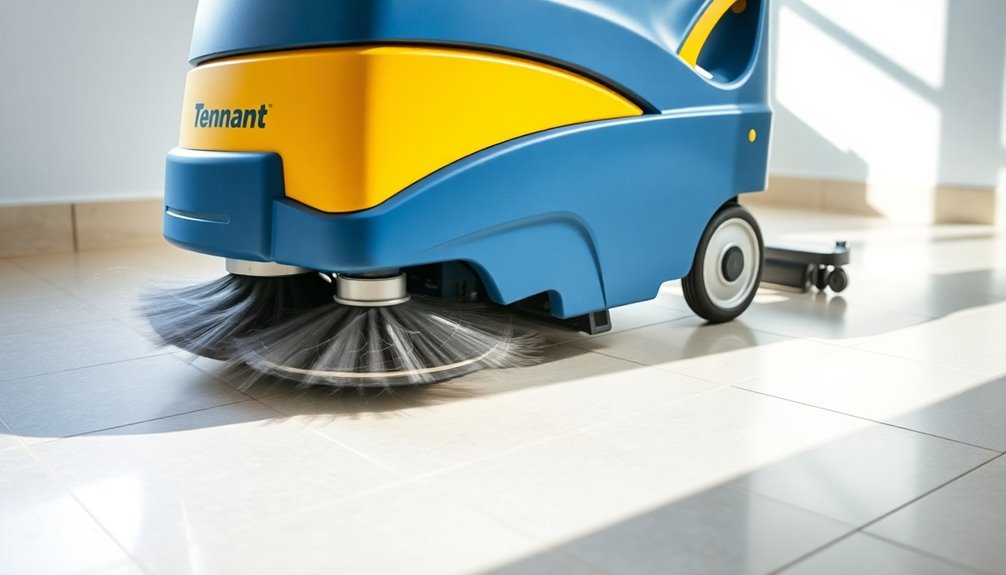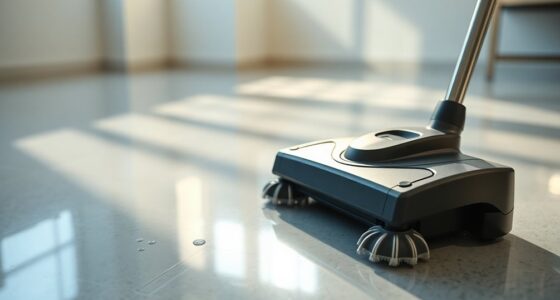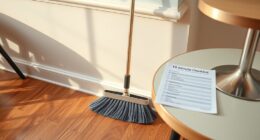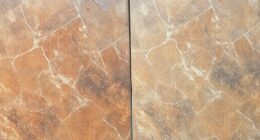To use a Tennant floor scrubber, start by checking safety precautions and inspecting the machine components. Verify the solution tank is filled with water and detergent. Press the scrub switch to lower the brushes and start scrubbing, adjusting the solution flow as needed. After scrubbing, raise the brushes and squeegee, then drain and clean the recovery tank. Maintain the vacuum fan filter and keep the machine in good condition. Stick around to discover more tips and procedures!
Key Takeaways
- Thoroughly read the operator's manual for safety instructions and operational guidelines before using the Tennant floor scrubber.
- Fill the solution tank with water and detergent, maintaining a level 25 mm (1 in) below the fill opening.
- Lower the scrub brushes by pressing the scrub switch and adjust the solution flow as needed during operation.
- Use the squeegee lever to lower the squeegee for effective liquid collection while scrubbing.
- After use, raise the scrub brushes and squeegee, then clean the recovery tank and inspect the vacuum fan filter.
Safety Precautions
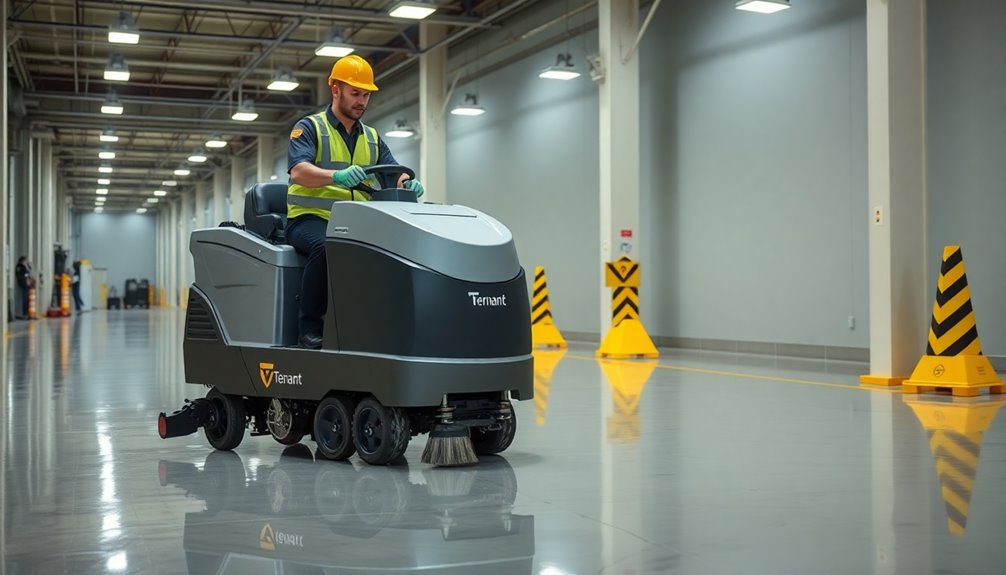
When operating the Tennant floor scrubber, it's crucial to prioritize safety to prevent accidents and injuries.
Start by reading the operator's manual thoroughly to understand all safety instructions.
Make sure no flammable materials are in the solution tank, as this can lead to fire risks.
When handling the scrub brushes, avoid direct contact with the batteries due to hydrogen gas emissions.
Always keep sparks and open flames away from the machine, and leave the cover open while charging to reduce fire hazards.
Regularly inspect the safety labels on the floor scrubber to stay informed about potential risks associated with its vacuum system and operation.
Components of the Floor Scrubber
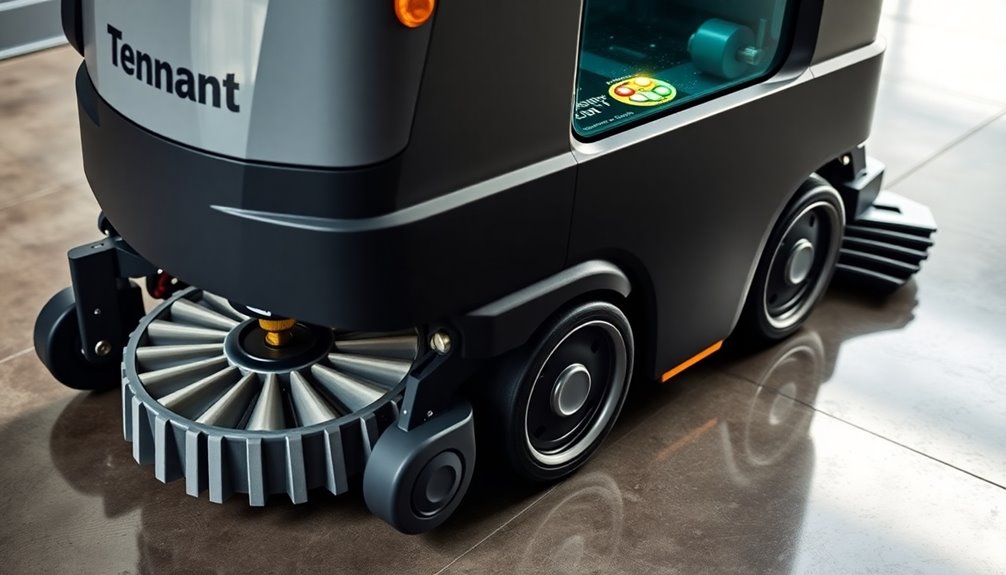
The Tennant floor scrubber is a sophisticated machine designed for efficiency and effectiveness in cleaning.
It features a solution tank that holds cleaning solution, which flows to the scrub brushes or pads during operation. As you guide the machine, these brushes or pads effectively agitate and clean the floor surface.
The squeegee then collects the dirty solution, directing it into the recovery tank for vacuum recovery. To enhance this process, a vacuum fan is integrated to assist in removing the liquid from the floor, ensuring a thoroughly clean surface after scrubbing.
You'll also appreciate the steering handles, which control both speed and direction, allowing for easy maneuverability as you clean various areas without difficulty.
Pre-Operational Checks
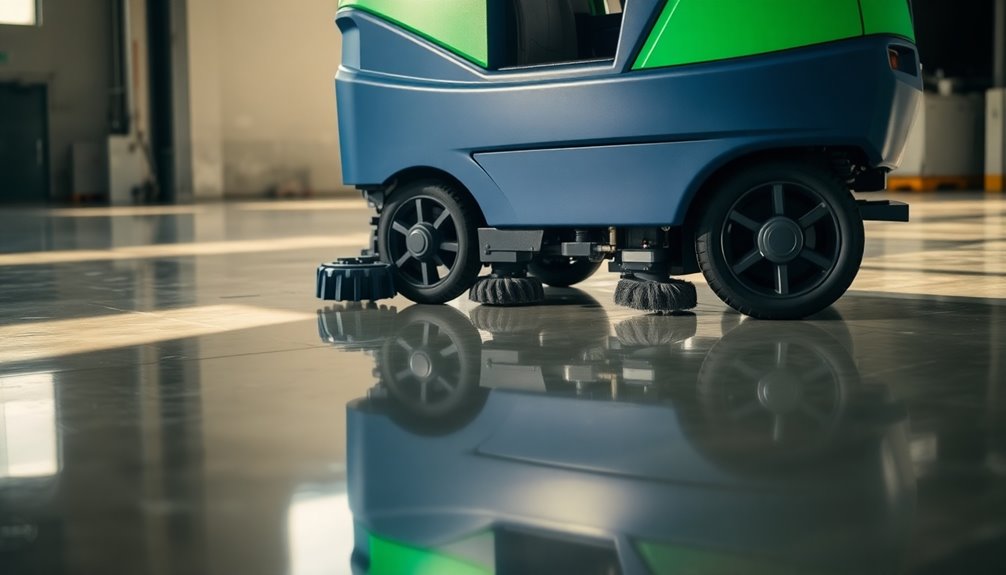
Before you start using the Tennant floor scrubber, it's crucial to perform a series of pre-operational checks to guarantee safe and effective cleaning.
First, inspect the area under the machine for any leaks, ensuring proper functionality.
Next, check the squeegee for proper deflection and examine the blade for wear, rounded edges, nicks, or cuts that could impact performance.
Make sure the scrub head strap is in place for heavy scrub mode to achieve peak results.
Clear any debris like wire or string from the area to prevent damage to the scrub brushes or pads.
Finally, open the solution tank cover, fill it with water, and add detergent, keeping the water level 25 mm (1 in) below the fill opening.
Preparing the Solution Tank
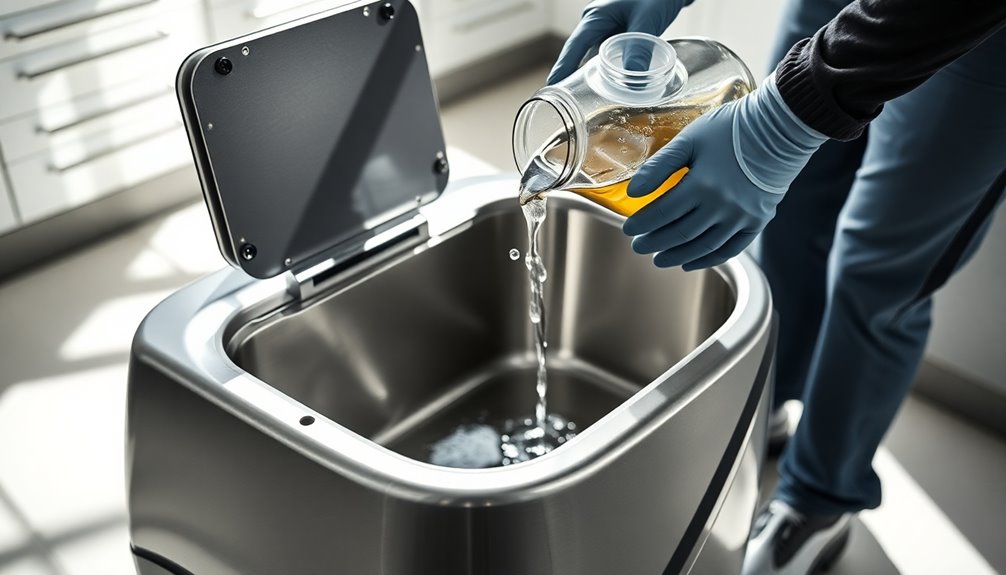
To prepare the solution tank effectively, start by opening the cover and partially filling it with water, making certain the water level stays 25 mm (1 in) below the fill opening to prevent any overflow.
Next, add the required detergent according to the manufacturer's instructions for peak cleaning performance.
Before you fill the tank, inspect it for any leaks or damage to guarantee proper operation during use.
It's also important to clear the area of any debris like wire, string, or twine to avoid clogs or damage.
Once you've filled the tank, confirm that all components, including the solution flow lever, are functioning properly before moving on to scrubbing.
This guarantees a smooth and efficient cleaning process.
Operating the Floor Scrubber

Once you've prepared the solution tank, it's time to operate the Tennant floor scrubber. First, verify the solution tank is filled with water and detergent, leaving 25 mm (1 in) below the fill opening. Check for any leaks or debris. To start scrubbing, press the top of the scrub switch to lower the brushes and use the squeegee lever to lower the squeegee. Adjust the solution flow using the solution flow lever as needed. To stop scrubbing, release the steering handles and press the bottom of the scrub switch to raise the brushes and squeegee. Here's a quick reference:
| Action | Description | Notes |
|---|---|---|
| Engage scrub head | Press the top scrub switch | Lowers brushes |
| Lower squeegee | Use the squeegee lever | Initiates scrubbing |
| Adjust solution flow | Push the solution flow lever forward | Increase flow as needed |
| Stop scrubbing | Release steering handles, press bottom switch | Raises brushes and squeegee |
Post-Scrubbing Procedures
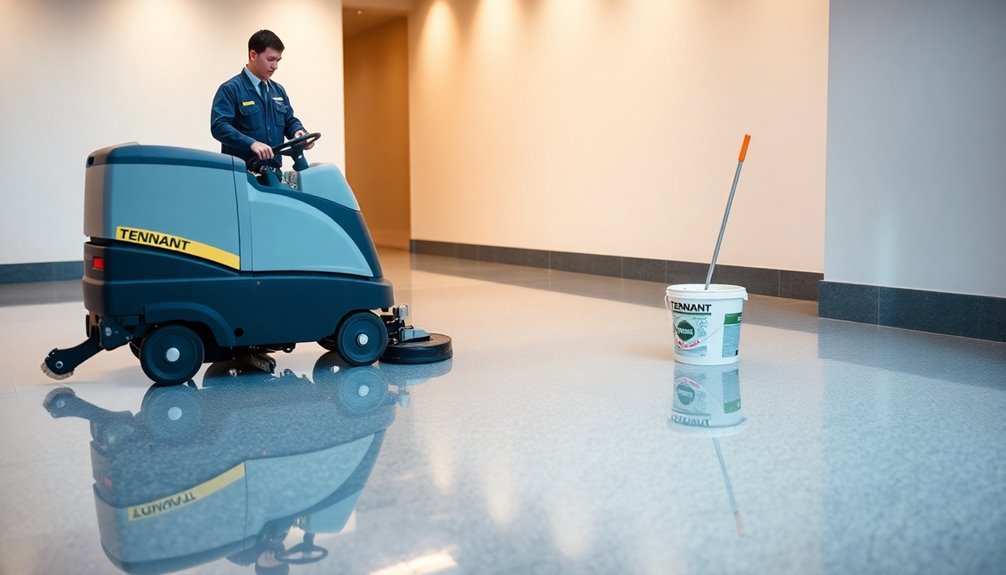
After you've finished scrubbing, it's important to follow the proper post-scrubbing procedures to maintain your Tennant floor scrubber's performance and longevity.
Start by raising the scrub brushes and squeegee to prevent damage and guarantee effective cleaning between uses.
Next, drain and clean the recovery tank when it's full, and remember to turn off the machine.
Check the solution tank for any remaining solution and empty it if necessary to avoid contamination.
Remove the recovery tank drain hose and flush it with clean water to prevent clogs.
Finally, inspect and clean the vacuum fan filter after each use, allowing it to dry completely before your next operation to maintain peak suction efficiency.
Maintenance and Care

Maintaining your Tennant floor scrubber is essential for guaranteeing its efficiency and longevity. After each use, check and clean the recovery tank, draining and flushing it with clean water to prevent odors. Inspect the squeegee for any wear and replace the blade if damaged. Always check the battery charge level and electrolyte levels to prolong battery life. Before operating, ascertain scrub brushes or pads are debris-free and inspect for damage, replacing any that are worn. Regularly review service records and schedule maintenance checks to keep all components in top shape.
| Maintenance Task | Frequency |
|---|---|
| Clean recovery tank | After each use |
| Inspect squeegee | Weekly |
| Check battery levels | Monthly |
Frequently Asked Questions
How Do You Start a Tennant Floor Scrubber?
To start a Tennant floor scrubber, you need to make sure it's on a level surface.
Fill the solution tank with water and detergent, ensuring it's not overfilled.
Turn the key switch to the right to power it on, and check the battery indicator for a good charge.
Once everything's set, engage the scrub switch to lower the brushes, and you're ready to begin scrubbing.
How to Operate a Floor Scrubber?
To operate a floor scrubber, start by conducting pre-checks for any leaks and ensuring all components are functional.
Engage the scrub switch to lower the scrub head and adjust the solution flow lever as you move forward.
Keep an eye on the squeegee blade deflection to effectively recover dirty solution.
Once done, raise the scrub brushes and squeegee, then drain and clean the recovery tank to maintain peak performance.
Regularly check the battery level, too.
Why Is My Tennant Floor Scrubber Not Picking up Water?
If your floor scrubber isn't picking up water, check the squeegee first.
Make sure it's adjusted properly and not worn down.
Inspect the vacuum fan; it needs to work effectively for good suction.
Don't forget to look at the recovery tank—if it's full, it won't suction properly.
Finally, check for any blockages in the hoses that might restrict airflow.
Addressing these issues should help improve your water pickup.
How Do You Drain a Tennant Floor Scrubber?
To drain a Tennant floor scrubber, start by ensuring the recovery tank is full.
Next, locate and remove the drain hose attached to the recovery tank.
Position a container underneath the hose to catch the dirty water as it flows out.
Once drained, flush the recovery tank with clean water to eliminate any debris.
Finally, securely reattach the drain hose, and remember to clean the tank after each use for best performance.
Conclusion
Just like a knight tending to their trusty steed, caring for your Tennant floor scrubber guarantees it's always ready for battle against dirt and grime. By following the safety precautions, checking components, and maintaining your machine, you equip yourself for a shining victory in cleanliness. So, armor up with proper practices, and let your floor scrubber lead the charge, turning even the dirtiest floors into a polished kingdom. Your efforts will surely shine through!
